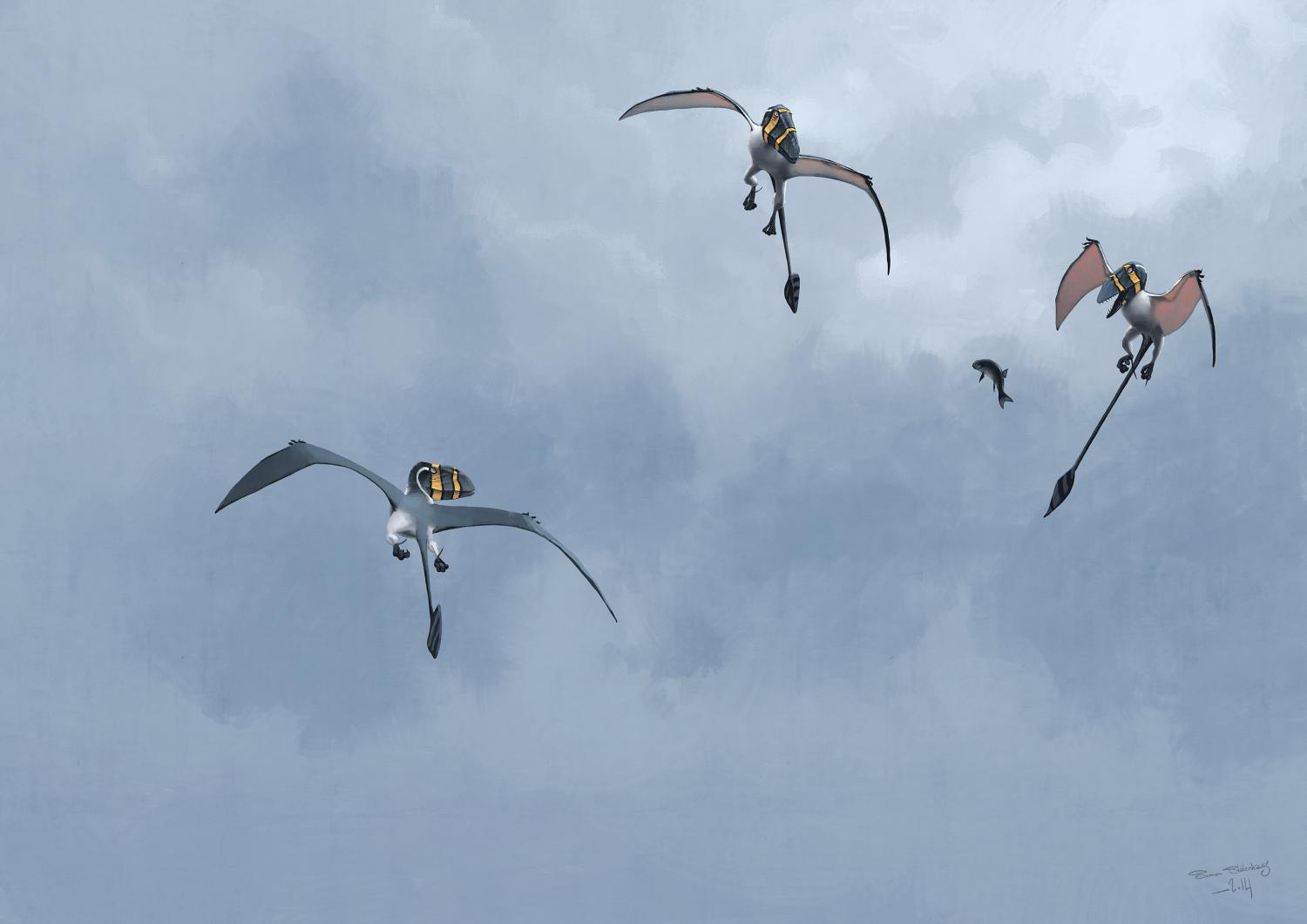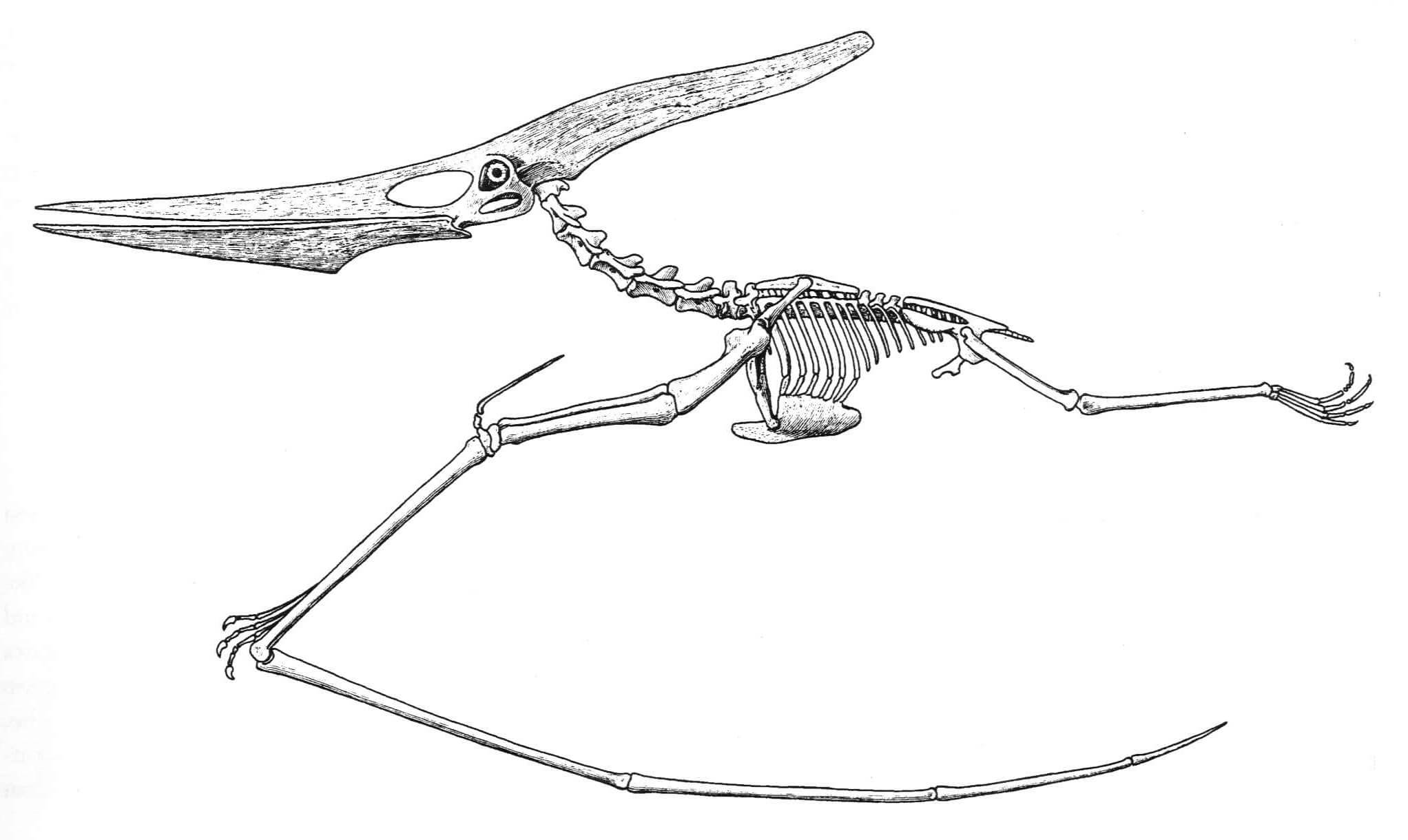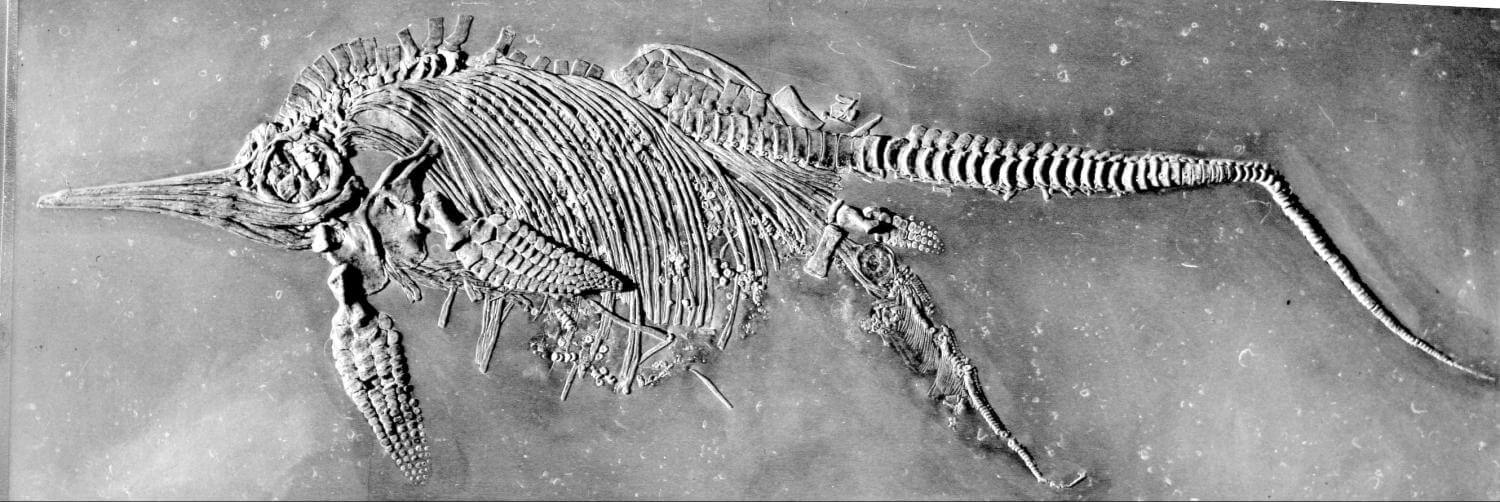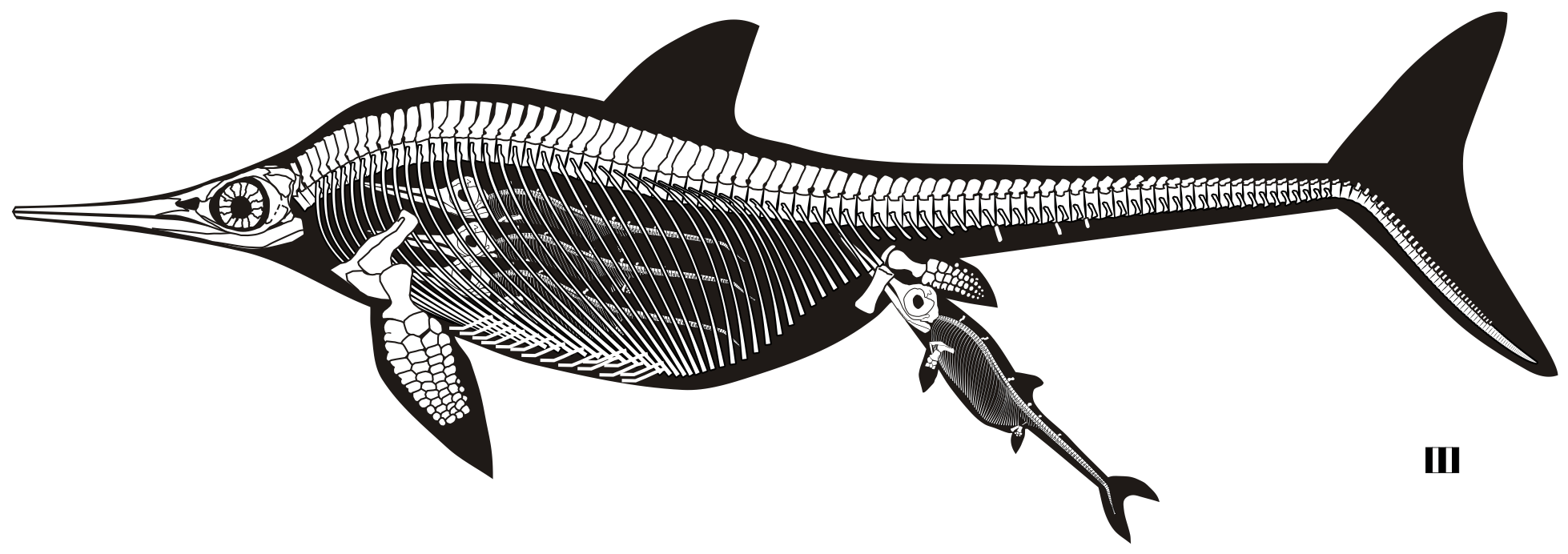How and why
Pterosaurs were the first vertebrates that could fly. But how did that come about? They were also the first that were able to catch flying insects.
During the same period, some land-dwelling vertebrates began to live in the sea. That required a number of evolutionary adaptations.
Up in the air
Flying vertebrates had an obvious advantage, compared to their competitors on the ground. For example, it was easier to escape if they were hunted. Pterosaurs were the first true flying vertebrates, not merely gliders. For that, wings are needed.

Eudimorphodon. During the Triassic, pterosaurs were alone in the skies, except for insects.
Image: Simon Stålenhag
During the Triassic Period they were alone in the skies, except for insects. They were also the first vertebrates that were able to catch flying insects, which previously had no larger enemies.
Pterosaur wings consisted of skin flaps attached to the forelimbs and hand. They were held up by an extremely long finger, corresponding to the ring finger on humans.
In the middle of the wing was a small hand with three short, clawed fingers which could be used to grasp branches or prey. The wrist had a special bone that held up a flap of wing in front of the arm.

Skeleton of pterosaur. Here you see your hand and the extra leg on the wrist. The head is large in relation to the body, and the eye is large.
In order to minimize weight, a pterosaur’s body was small in relation to its head. Inside the largely hollow bones were air-filled channels that also reduced weight, just as in modern flying birds.
Pterosaurs had large eyes. So did dinosaurs and ichthyosaurs, to help them orient themselves and find food.
Return to the sea
The descendants of some land-dwelling vertebrates returned to life in the sea. That required changes in their body structures. Of course, they had to be good swimmers in order to catch food and escape enemies.
Some characteristics remained, such as the ability to breathe air like modern whales.
The most important changes in ichthyosaurs and plesiosaurs were:
- Powerful bodies with massive ribs, plus sturdy pelvises and shoulders.
- Shorter limbs that transformed into fins and larger, flattened feet.
- Giving birth to live young in water instead of laying eggs on land.
- Bigger eyes in order to see better in the water and find food.
Ichthyosaurs had the largest eyes that any vertebrates ever had. They also had a powerful tail fin that propelled them through the water, and pectoral fins on their sides that had evolved from rear and front limbs.
Plesiosaurs swam with the help of both front and rear limbs, which were transformed into powerful paddles. They used their limbs in the manner of wings and almost flew through the water.


Fossil of a pregnant ichthyosaur female with several embryos, one of which is partly born. Below artist’s representation of a pregnant ichthyosaur.
Photo: Das Staatliche Museum für Naturkunde Stuttgart
Image: Ryosuke Motani, Da-yong Jiang mail,
Andrea Tintori, Olivier Rieppel, Guan-bao Chen
%20bild87-Jura_fisk%C3%B6dlafri250.png)

